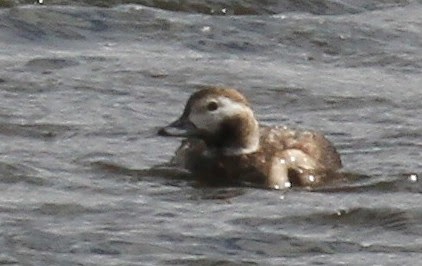 |
| Watchers at the verandah |
Rob Pocklington National trust ranger
met us at Sizergh Castle’s car park; here we hoped to see the cherry stone crunching
Hawfinch. Arriving at 8:00am, after a somewhat scary drive from the
‘pool, managing to survive the onslaught
of a massive hailstorm that fell from black skies as we cruised along the
motorway, the world turned white and evidence of those who had travelled before
skidding on the slippery surfaces!
Back at the car park expectation was
high as Rob was busy telling us that the had seen nine birds the day before, 6
in the trees and 3 feeding on the ground;
when suddenly 2 birds flew over head, heading for the trees
behind the cafe. A tick but we hoped for
better.
The playground/picnic area and
surrounding Hornbeam trees(favoured by these finches) were busy with foragers, chaffinch, blue and great tits, wren,
blackbirds, nuthatch, coal tit, jay, robin,
dunnock, goldfinch, bullfinch, collared doves, and song thrush.
Where was our quarry? A small party of four redwing flew over; 50 minutes later a little unease was growing, when a
single Hawfinch made an appearance and thankfully landed on the top of a cherry tree directly in front of the
café verandah where we were all gathered. We had good views of the bird for a few minutes, as it
flitted around in the tree, before it flew off.
9.15am and most of the watchers
had retired to the café for bacon and sausage butties when the bird returned! this
time it landed on the embankment and mooched about with the other foragers.
Fantastic, the cafe had picture windows
you didn’t even have to leave your seat!!
 |
| Hawfinch -South Cumbria Hawfinch Project |
So there we have it objective achieved, before we left Rob told us
about his work with the South Cumbria hawfinch project, hawfinches are in decline
by 70% locally. The group have been
ringing and attaching radio trackers to the local hawfinches, in particular
females as they hope to ascertain where the birds go to breed, with the plan of
surveying the woodland areas they favour and subsequently re-create and maintain
habitats for future generations. However
tracing the birds after has been difficult, in 2012 they were only able to
track down a male who turned out to be 10 kilometres away! If you
would like more information on the project then please contact Rob the ranger, robert.pocklington@nationaltrust.org.uk
Also if anybody sees colour ringed birds
(red ring with 2 white digits on left leg) then please let him know.
With
the clock ticking towards 10am we made our way to RSPB Leighton moss for a rendezvous
with a few more local group members who hadn’t heard the cockerel call!
First
stop was the comfy Lillian’s hide. It wasn’t long before a sharp eye had
located the female long tailed duck, continually in motion, on the water for
seconds before it dived down
again and again. Long tailed duck Others on the waters and islands,
tufted duck, gadwall, goldeneye, teal, moorhen, coot, heron, greylag, lapwing, lesser
black backed, herring and black headed gulls. A solitary Snipe camouflaged,
motionless sat huddled in the grass along the reed bed edge. Teal gleamed in
the sunshine, in the grassy waters. No Water Rail today.
 |
| Long tailed duck- Neil P |
We then set out for the grit trays set up for the
Bearded Tits, situated in the reed beds close to the causeway path. A Chiffchaff
flitting around the pond dipping area was an unexpected bonus. Unfortunately the
weather had turned blustery with intermittent heavy showers, this did not bode
well and as expected the temperamental beardies failed to make an appearance.
A frantic shower dodging dash for the public hide
ensued. Here where mallard, gadwall, cormorants,
pochard, coot, greylags, gt black backed gull, lapwings, tufted duck, gt
crested grebes, grey heron and tufted duck. An excited shout alerted us to two
otters frolicking at the back of the mere, apparently having made short work of
an eel lunch. Sadly no Kingfisher streaking across the water or booming bittern
sighted.
We made our way down the woodland path down to the
lower hide noting yet more greylag and pheasant in the fields alongside.
At the hide a treat was in store. Marsh
Harriers hanging and swooping over the reeds, giving us great views of their
underwing markings, both male and female. Impressive!! Shelduck, shoveler and redshank stood out from
the others seen before.
 |
| Marsh Harrier - Neil P |
Time for a break and another café stop, we headed
back along the path, another opportunity to tick a few more off, this time
treecreeper, goldcrest, marsh tit and gt spotted woodpecker.
Mid afternoon, cake ate.
 |
| Spotted Redshank -Neil P |
A quick visit to (Eric and
Ernie hides) Allen and Eric Morecambe hides, before heading home. These hides look
over the
saltmarsh towards Jenny Brown’s point and Morecambe bay. Highlight
of the saltmarsh pool was a splendid spotted redshank, giving us an opportunity
to compare it to more common redshank nearby. Others added to our day list here
included avocet, pintail, little egret, oystercatcher, curlew.
Another Jolly birding day out in beautiful Lancashire.
Laura


2 comments:
lovely report Laura.
Sean.
Nice one Laura, well done. Thanks
Post a Comment